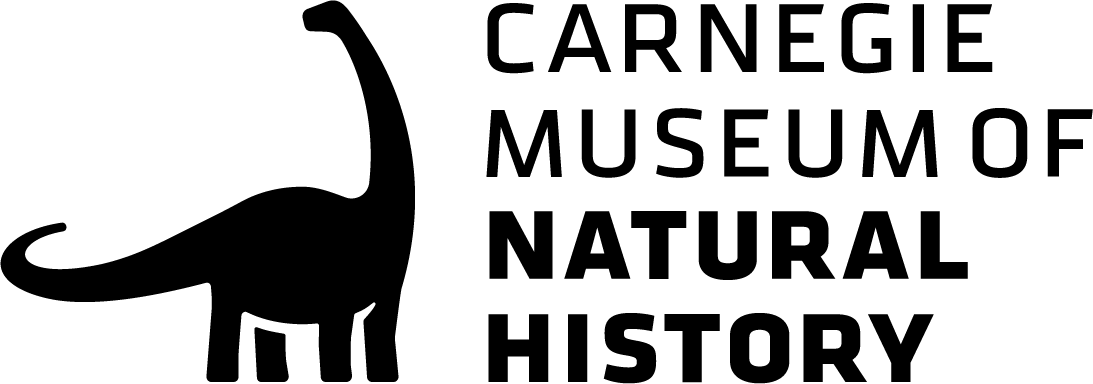November 2008
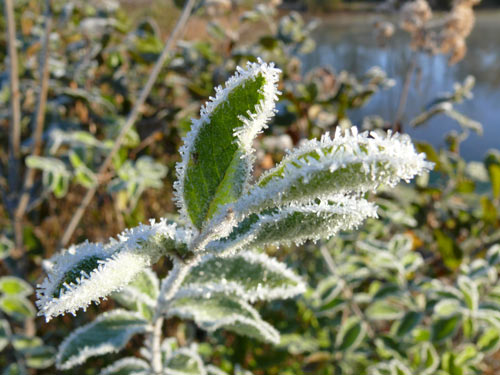
Frosty Morning!
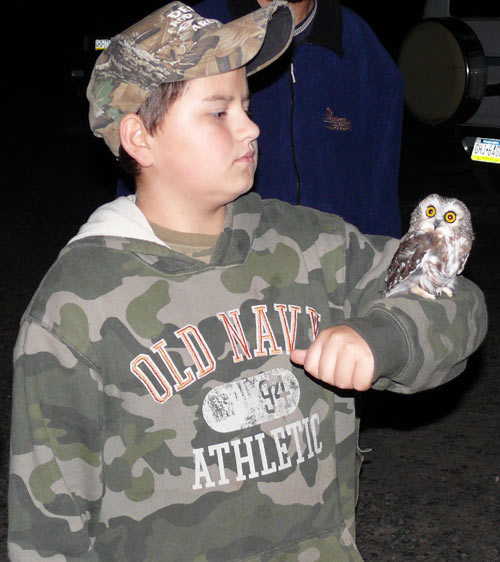

In early November Boy Scout Troop 311 came to the Powdermill Bird Banding Lab to complete their Bird Study Merit Badge.
During the day they learned about bird banding at the lab and by the end of the day were able to identify many of the common birds by both sight and sound. That night we were fortunate to capture several Northern Saw-whet Owls with the troop.
Pictured to the left are a couple of the scouts releasing these docile owls.

We also hosted a group of students from the Valley School of Ligonier who were working on a climate change project and came to Powdermill to learn a little bit about how these changes may be affecting bird populations.
Here, several of the students are checking out a White-throated Sparrow that had just been banded.
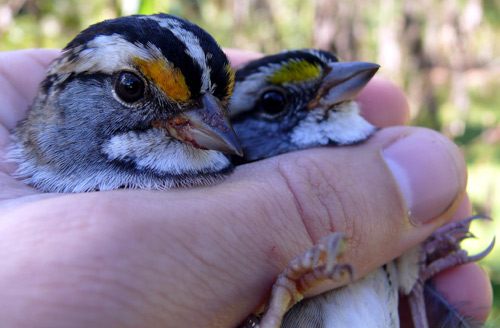
White-throated sparrows are easily identified by birders by the yellow coloration in their lores. Previously, on this website, the different morphs (white striped and tan striped) of White-throated Sparrows has been discussed.
This fall, one of the White-throated Sparrows captured at Powdermill had orange lores instead of the typical yellow lores. The coloration of the lores is the result of pigments known as carotenoids, which produce reds, oranges, and yellows in birds. Carotenoids are only synthesized by plants, and birds must acquire them from their diet.
The replacement of yellow with orange coloration is well known in the tail band of the Cedar Waxwing. For the waxwing the orange coloration is the result of consumption of rhodoxanthin, a pigment found in the fruits of exotic honeysuckles.
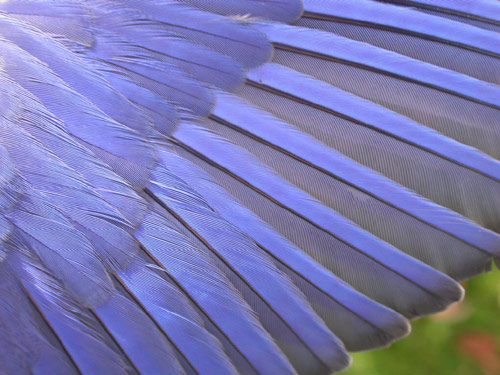
Some Eastern Bluebirds will spend the winter in the Powdermill area, and we captured and banded 2 bluebirds in November.
Shown is the outstretched wing of an after-hatch-year male bluebird. Notice the sharp blue edging on the feathers and the lack of a molt limit.
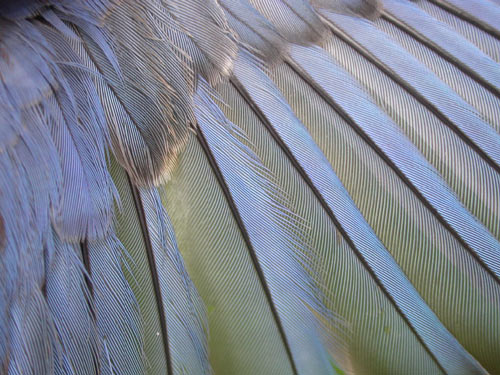
To the left is the outstretched wing of a hatch-year bluebird. Here you can see the dusky gray edging on the primary coverts and the outer greater coverts.
Also, note the molt limit among the greater coverts (outer ones with gray edging are juvenile feathers).
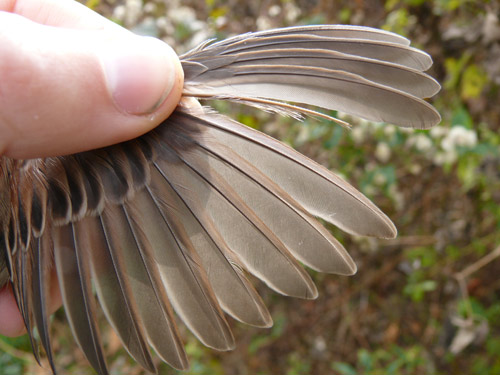
This Song Sparrow had an interesting pattern of feather wear. In the photograph you can see that the fifth primary shows extreme wear with the barbs/barbules worn away and only a portion of the rachis remaining.
Interestingly, not only did the surrounding primaries show very little wear, but this exact pattern was symmetrical (found on both wings).
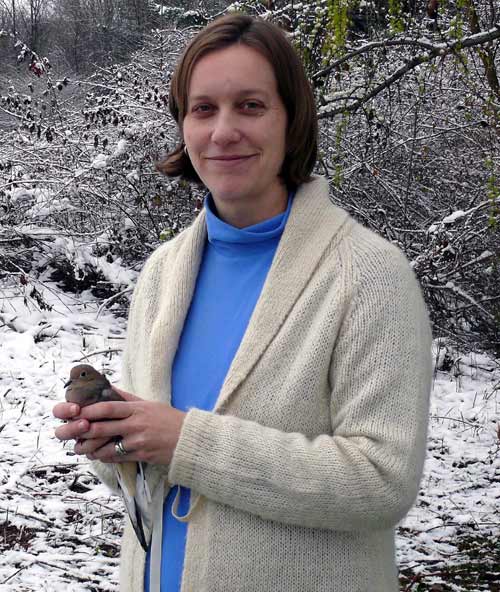
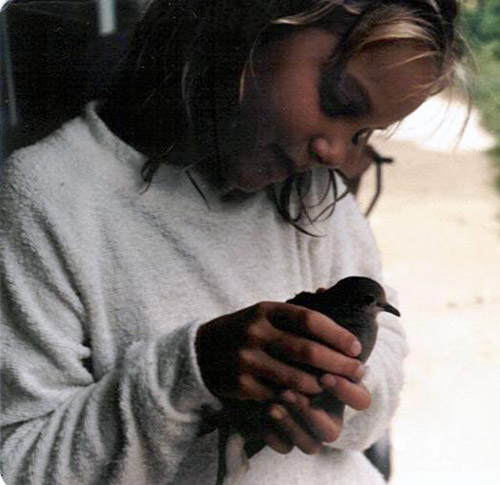
Throughout the Fall we were grateful for the help from many people including Bob Mulvihill, Bob Leberman, Andy Mack, Mike Lanzone, Dave Smith, Cokie Lindsay, Emma Deleon, Lewis Grove, David Norman, Eugene Hood, Alice Van Zoeren, Alex Shidel, Bob and Margaret Vitz, Anna Marie Bakermans, Rob Slebodnik, Richard Joos, Jennifer Wang, Kristi Bowersox, Jeff Territo, and Carol Lebarthe.
We were especially grateful to Marja Bakermans and Mary Shidel who both dedicated many hours to the banding effort. Not only was their help essential in operating the banding operation, but their positive attitudes and enthusiasm for the birds was equally important.
Here are two very different pictures of Marja holding a Mourning Dove.
Marja’s interest in birds was developed during her childhood when she spent countless hours in the woods with her father.
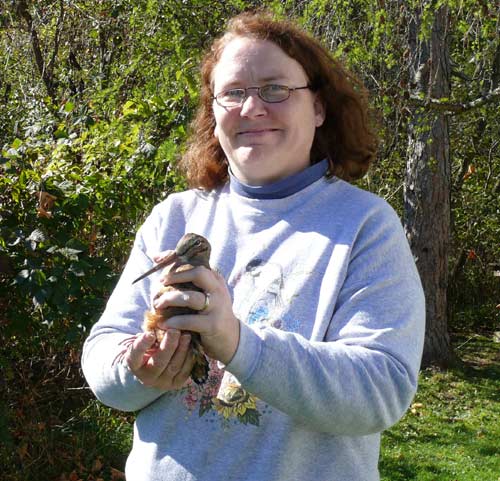
Mary began volunteering at Powdermill’s Bird Banding Lab during the winter of 2006-2007. When she began she had no experience with the techniques of bird banding.
Through dedication and hard work, Mary has gained proficiency at extracting and banding birds. Still, every morning that she comes to Powdermill she remains enthusiastic and passionate about the birds. We are absolutely thrilled to have Mary as a volunteer of the Banding lab!
To the left Mary is photographed with an American Woodcock that flew into the net right in front of her.
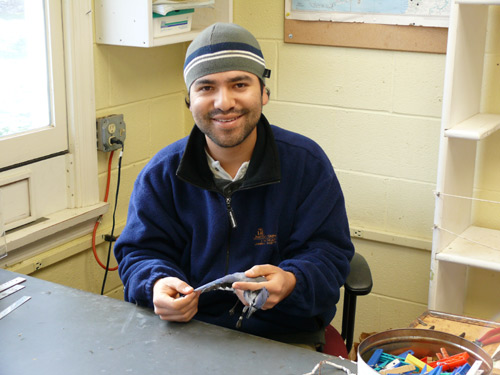
Finally, we wanted to thank Gerardo Rodriguez, our bird banding intern from Mexico. When Gerardo arrived at Powdermill he already had experience with bird banding.
While he was here, Gerardo worked very hard at improving his banding skills, and by the time he returned to Mexico (in November) he had become a superb bird bander. All of us here at Powder hope to see Gerardo return in the future.
Gerardo is shown processing a Blue Jay on his last day at the banding lab.
